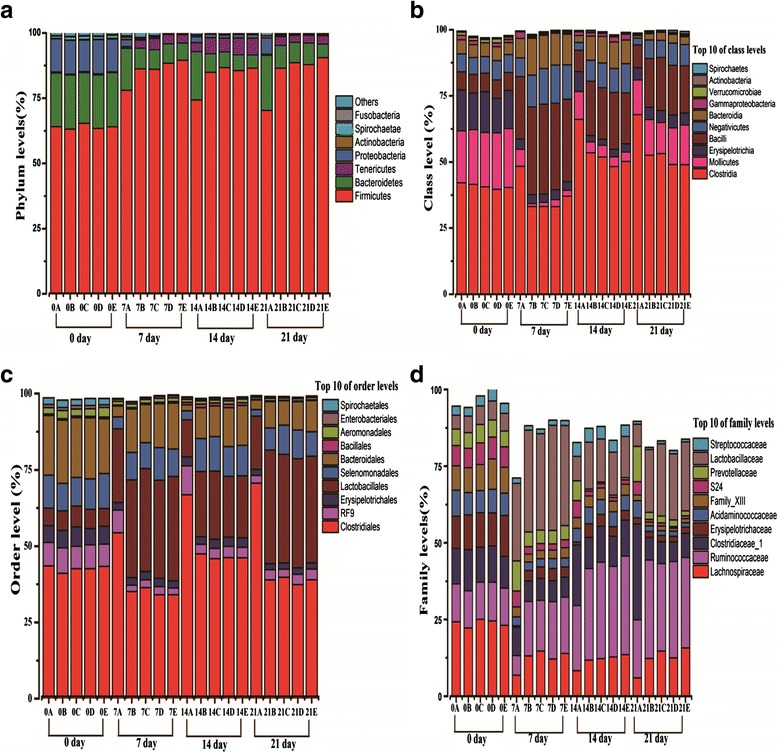Fig. 1.

Percentage relative abundance of OTUs observed at the phylum (a), class (b), order (c) and family levels (d). Note: 0A, 0B, 0C, 0D, and 0E represent the samples of the control,INVSc1(EV), INVSc1-TE(−), INVSc1-EE(+), and INVSc1-IE(+) groups, respectively, at day 0; 7A, 7B, 7C, 7D, and 7E represent the samples of the control, INVSc1(EV), INVSc1-TE(−), INVSc1-EE(+), and INVSc1-IE(+) groups, respectively, at day 7; 14A, 14B, 14C, 14D, and 14E represent the samples of the control, INVSc1(EV), INVSc1-TE(−), INVSc1-EE(+), and INVSc1-IE(+) groups, respectively, at day 14; 21A, 21B, 21C, 21D, and 21E represent the samples of the control, INVSc1(EV), INVSc1-TE(−), INVSc1-EE(+), and INVSc1-IE(+) groups, respectively, at day 21
